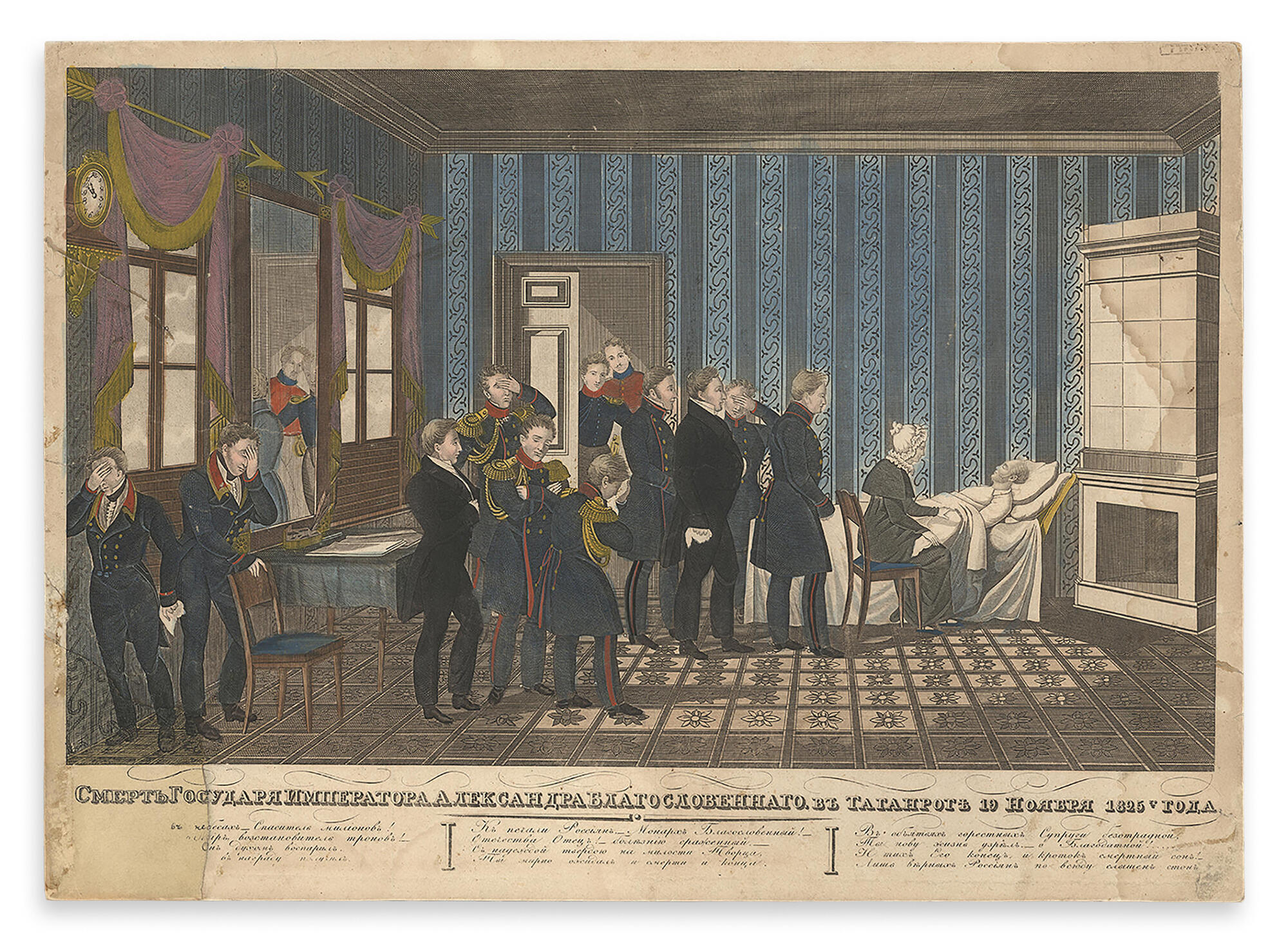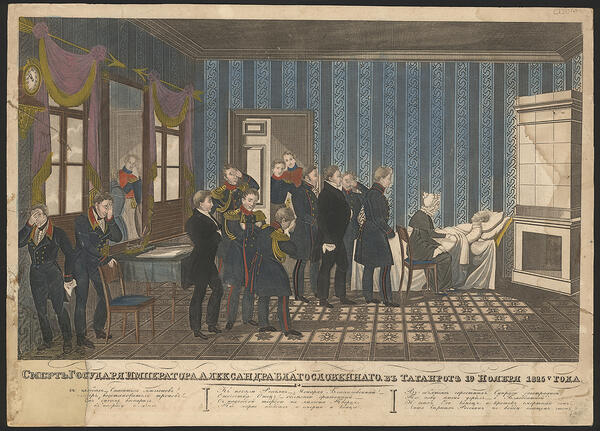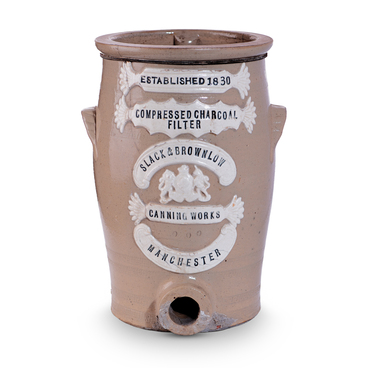Emperor Alexander I passed away in Taganrog on December 1, 1825 (November 19 according to Old Style) after catching a cold during his trip to Crimea. The emperor died in the house located at 40 Grecheskaya Street, which has been preserved to this day. Since 1992, it has been protected as a monument of cultural heritage of regional significance.
The museum collection contains a hand-colored watercolor lithograph. The artist depicted a room at the emperor’s palace with Emperor Alexander I in his dying hours and Empress Elizabeth Alexeievna sitting at his deathbed.
There are 12 figures in the engraving, including people close to the emperor who were with him during the last hours of his life. Although their facial features are not detailed, one can recognize Prince Pyotr Mikhailovich Volkonsky, wearing general’s uniform and crossing his arms over his chest.
Next to Prince Volkonsky, the artist depicted two aide-de-camp generals. They are identified by their aiguillettes and epaulets bearing the royal monogram of Alexander I. Most likely, they are Ivan Ivanovich Dibich, who accompanied the emperor on all of his travels, and Alexander Ivanovich Chernyshyov, who was a member of the emergency committee and drew up an official report on the emperor’s death.
Among the four people standing at the emperor’s deathbed, one can recognize the emperor’s physician Yakov Vasilyevich Wylie. He is wearing a tailcoat and holding a handkerchief. This group also includes the physicians Dmitry Klimentyevich Tarasov and Konrad Konradovich Stoffregen.
After the death of Alexander I, Pyotr Mikhailovich Volkonsky acquired the building with all of its furnishings for Empress Elizabeth Alexeievna to establish a memorial museum “The Palace of His Imperial Majesty Alexander I.” At the request of the emperor’s widow, a field military church of the Exaltation of the Holy Cross was established in the room where the emperor had died.
The engraving “The Death of Alexander I in Taganrog” was originally published in the book “Taganrog: A Detailed Description of the Illness and Death of Emperor Alexander I” by Nikolay Vasilyevich Danilevsky. The lithograph quickly became popular and was sold in various composition and color variations.




